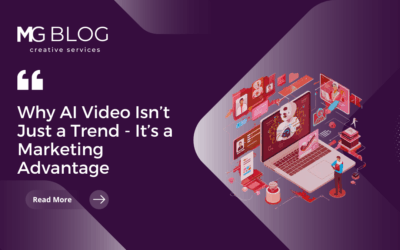In the first of a three-part series on B2G Marketing, Merritt Group and Market Connections discuss how to optimize your account-based marketing (ABM) approach for the federal government market. For the Lay of the Brand podcast, Peter Jacobs of Merritt Group and Aaron Heffron of Market Connections dive into the evolution of federal ABM, if it’s a strategy worth pursuing, what should be considered when developing an ABM strategy, and how research can support federal marketers at every step.
Here are the highlights of our conversation. Click below to listen to the podcast or visit layofthebrand.com.
For a free download of key findings from Market Connections federal government research, click here.
Evolution of federal account-based marketing
Peter Jacobs, Lay of the Brand: Government-focused companies have been engaged in what’s now called account-based marketing for years to varying degrees. What’s changed about ABM over time?
Aaron Heffron, Market Connections: Years ago, account-based marketing within government meant marketing to the public sector rather than the commercial sector. It has evolved over time where, within government, there’s differentiation between SLED and FED, civilian and defense, albeit still at a relatively high level. Now, we’ve caught up to where B2B and B2C marketing has been for the last 10-15 years, where there’s a further drill-down.
More information is available now than there ever was about individuals, about the offices they work for, the agencies they work for, which has pointed many marketers in the direction of tailoring things more than we used to.
The availability of the data along with the acknowledgment that the government market is not a monolith has really moved people forward into this type of setting.
Peter Jacobs, Lay of the Brand: So, you’re seeing that ABM campaigns are becoming more research-driven because there’s more information to pull from?
Aaron Heffron, Market Connections: It’s a little bit of a chicken and egg. Where there’s more information that makes ABM more possible, people want to do more ABM. So, they want to make more data available and collect more data as we go along. However, there are limitations to it. With all the publicly available information that’s out there — whether it be the upcoming budgets that the agency has, the contact information for the people that you’re trying to reach, or the direction and overall mission of the agency and what they’re trying to accomplish in the upcoming year — it’s all catnip for marketers who want to get into ABM.
However, it’s one thing to have all that information there. It’s another thing to know what to do with it.
Research-based targeting
Peter Jacobs, Lay of the Brand: Let’s talk a little bit more about this targeting and messaging. You need to find the right people and then you need to reach them with the information they need in the time and place that they need it. What has your research shown to be successful in approaching these aspects?
Aaron Heffron, Market Connections: We like to start off with the “what.” What are they reading? What are they listening to? What are they seeing? What are they listening to? What are they seeing on a regular basis? This may all depend on where they sit. Whether in Washington, DC or out in the field.
So after, you know the “what,” there’s the “where?”
For example, we’ve seen a change over the last year and a half to two years with regard to commuting, especially in the DC area, and therefore a change in the listenership of radio. Knowing the dynamics for your target agencies is really the next step.
And then the last piece, do you really know “why” they are looking to fill this particular need? Are they being challenged from the executive level? Is there an executive mandate that has come down that says must meet certain deadlines or certain criteria, or is this something that has bubbled up because there are shortcomings in the existing infrastructure or systems they have in place that they have found to be challenging?
Once you have that view, then you can move to the implementation and understand the particular tools that can be used to reach those individuals at the right time and at the right place.
Peter Jacobs, Lay of the Brand: Let’s talk a little bit more about the channels and the audiences over the last year and a half. Have you seen a change in the channels of communication that are getting through to people?
Aaron Heffron, Market Connections: We have seen an evolution. Obviously, events were the first thing to go. At the beginning of last year, everybody tried to digitize their events in some way. Some folks did it well, for others, it went poorly (for no other reason than folks were just trying to figure out how to do so). How do you get from shaking people’s hands and targeting that one C-level person with a Zoom-type call, where you’re just a talking head? And I think that, even more so, where are these people going to be meeting in the future?
To some extent, I think that events are never going to get back to where they were. I think that while you do have this craving for human interaction, there are a lot of companies out there that are going to say, “We did pretty well with sales when we didn’t have to pay for them to travel everywhere and pay for these booths at the exhibit halls.” You also have government agencies believing they still learned about things without the need to travel to locations.
What it comes down to is the creation and communication of information in a “create it once and play it everywhere” situation.
As government contractors, we’re challenged to create one piece of information that is relevant to a lot of people and then play it forward on various platforms.
Peter Jacobs, Lay of the Brand: You mentioned the prevalence and the acceptance of “make once, play everywhere” kind of content. At the same time, when you’re looking at creating an ABM campaign, are there times that you should be targeting that content a lot more directly to certain audiences?
Aaron Heffron, Market Connections: There certainly is. But you have to go into that with knowledge of what you should be tailoring for and who you’re tailoring it to.
I see failures in ABM happen when there are assumptions made walking in. It’s easy to sit around the table with some sales and marketing folks and they say, “This is exactly the message,” or, “this is exactly what should be said because I talk to them on a regular basis.” While this information is important (knowing about what keeps those folks up at night, the kind of pressures that are being put on them at work, if there is a mission shift that’s happening, and matching that up with the messages that you’re trying to deliver don’t always necessarily align), the other pieces (70 percent+) of that information and the pain that the folks in the government are the same across everybody.
The failure I see is when you try to make something too tailored, too specific to the 30 percent, you’ve downplayed this other 70 percent that is important to these folks and that they need to make sure is checked off. So if you focus on tailoring too much, you’re missing the ultimate impact that you’re going to get out of an ABM campaign.
When’s the right time for ABM?
Peter Jacobs, Lay of the Brand: So how do B2G-focused companies make that decision as to when they should target really precisely and when they should go broader?
Aaron Heffron, Market Connections: One factor is looking at the type of product and service that you are offering. Is it a very niche type of product or service that has a very specific audience or is it something that is going to have broad appeal?
The second is looking at your own budget and capabilities. Can you realistically create a campaign that is tailored or custom to a variety of different agencies? If you’re a staff of one or two, it may not be realistic for you to try to embark on a very detailed ABM campaign. Instead think about how the 70 percent of your messaging that is going to be common, but tailor how to deliver it.
The other decision you can make is that knowing most of the audience gets information in the same way, tweak the messaging just a little bit. However, you must look at the ROI. Are you really going to make an appreciable difference by spending the extra time and dollars to customize, and are there such vast differences in your target audience?
Also, consider what your competitors are offering out there to make it worth your while? Do you really have something that is going to be really different than your competitor?
It could also come down to a cost and price issue. If it is, doing an ABM campaign may not necessarily be worth it. If you can’t make a value play, then ABM may not be worth it to you.
Peter Jacobs, Lay of the Brand: You touched on the differences between talking to civilian agencies versus DoD. Besides some of the language that you’d want to use, are there other aspects to the two different types of audiences that people should keep in mind?
Aaron Heffron, Market Connections: We do see some differences in tactics as well, coming out of the pandemic. We’re seeing that Defense audiences are more likely interested in getting back face-to-face events.
Surprisingly, we are also seeing Defense has increased their look at social media. It does make sense that we’ve seen an increase over the last year and a half because many of these Defense folks did not have access to social media because of secure situations that they were going into. So now that many of them are working from home or working in other remote locations, they’re starting to have a little more access to social media than they did before.
What’s interesting about civilian audiences is that they have been in government for a long time and have a lot of experience. Unlike DoD, where one employee may have spent their entire career in the Army (for example) and that’s all they know, a civilian employee may have gone through multiple agencies. Somebody working as a program manager at DHS may have been at Transportation (DoT) or at Energy (DoE) and they may have moved around within the civilian agencies. They’ve made a lot of connections and have a lot of history. So, knowing where that individual came from — even before their current job — is helpful to know when you’re trying to market in there and do something that’s very specific to an agency, that makes a difference in how you talk to them.
Peter Jacobs, Lay of the Brand: Once you decide that an ABM campaign is appropriate, are there any trends that can give you a starting place for what needs to be created and how to set up measurement once it’s underway?
Aaron Heffron, Market Connections: It’s important to lay the groundwork of information ahead of time for two reasons. One is it helps you tailor the campaign itself (as I mentioned, the “what, where, and why” from those individuals). That way, you walk in having a pretty good knowledge of what you should be saying, and it’s a matter of fine-tuning, getting things right, and putting the correct foot forward.
But what’s also helpful from gathering that information is you establish a baseline for yourself of knowing how agencies think of us in a certain way and how they think of your competitors. That way, a year from now, after you’ve invested dollars into getting out there, sent people on the road, and/or done X, Y, and Z; returning to those folks to know what’s different and how has the market changed, but also
Knowing how much you have moved the needle in their familiarity and awareness of you really allows you to continue to fine-tune because no ABM campaign is perfect from the beginning.
You’ll be able to demonstrate to executive management, who’s looking at that spend that you’re doing and connect it to some return on that investment. If you can say, we’ve moved the needle from point A to point B, pointing to sales and traction you’re starting to get, that’s incredibly helpful in securing budgets, going forward, growing budgets and justifying why you’re doing what you’re doing every day.
For the full reports from Market Connections studies, visit:
Want to learn more about how to reach government decision-makers? Listen to this three-part podcast series and other episodes at layofthebrand.com on your favorite streaming platform and check out our B2B Marketing Hub.




